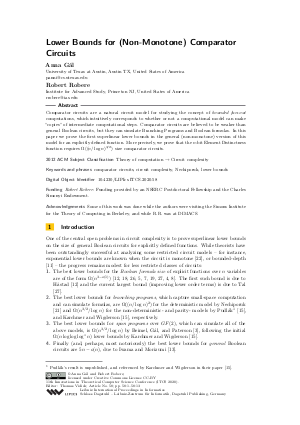LIPIcs.ITCS.2020.58.pdf
- Filesize: 467 kB
- 13 pages

 Creative Commons Attribution 3.0 Unported license
Creative Commons Attribution 3.0 Unported license








Feedback for Dagstuhl Publishing